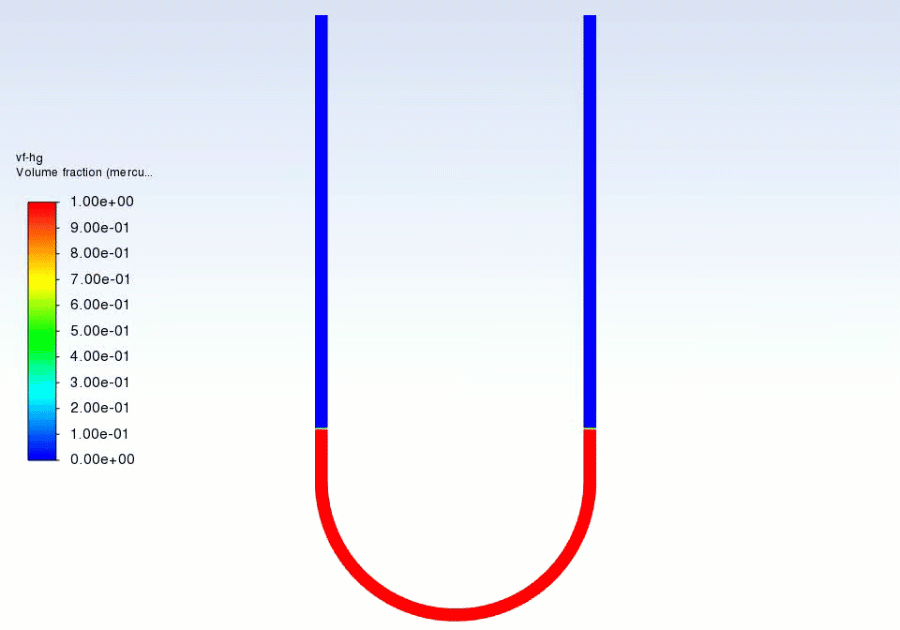Simulation Example - U-Tube Manometer
Overview
Manometers are pressure measurement devices that are commonly used in everyday life. For example, pressures in piping systems are constantly monitored using these devices. The U-tube manometer is a special form of manometer that gets the name from its “U”-shaped tube. The straight portions of this U are commonly referred to as the arms, limbs or ends of the manometer. The manometer is typically filled with a dense, colored fluid called the manometer fluid, which is used to visualize the pressure difference between the two ends of the tube. As the pressure at one of its ends increases, the manometer fluid inside the tube is pushed downward at that end. This causes the manometer fluid to rise in the other end of the device. The difference in the fluid levels between the two end is then used to measure the pressure difference.


Objectives
The main objective of this example is to understand how a U-tube manometer works and how it is used to perform pressure measurements. We will analyze the effect of increasing fluid pressure at one end of the manometer.
Setup
Download the Mesh file required for setting up the simulation and associated Case and Data files here. Follow the instructions below to set up this simulation in Ansys Fluent starting with the Mesh file. In case you face any issues setting up or running the simulation, refer to the corresponding initial and final Case and Data files.
Results and Discussion
Let’s now analyze the simulation and understand the physics of the U-tube manometer.
